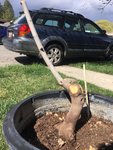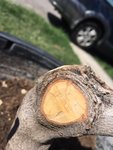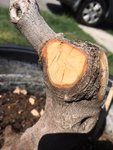takeme4granite
Yamadori
Hi guys, I am new to bonsai, and this is my first time posting not in the beginners forum. This is the first tree I bought. It is a Tartarian Maple variety Hot wings (acer tartaricum). It started off with 4 branches all coming out of the trunk. I chose one and cut the other 3 off.
My dilemma is that when I did it, I did a small amount of research and saw someone say that cut paste isn't really necessary. So I didn't use any. Now I am worried that the wounds won't heal well, that I will get die back, or just generally that I messed up this tree. There are cracks forming where I cut the branches from. I cut the branches off about a month ago
Do you guys think that I should apply cut paste now? Is it too late? Does cut paste really matter?
Pics below




My dilemma is that when I did it, I did a small amount of research and saw someone say that cut paste isn't really necessary. So I didn't use any. Now I am worried that the wounds won't heal well, that I will get die back, or just generally that I messed up this tree. There are cracks forming where I cut the branches from. I cut the branches off about a month ago
Do you guys think that I should apply cut paste now? Is it too late? Does cut paste really matter?
Pics below





